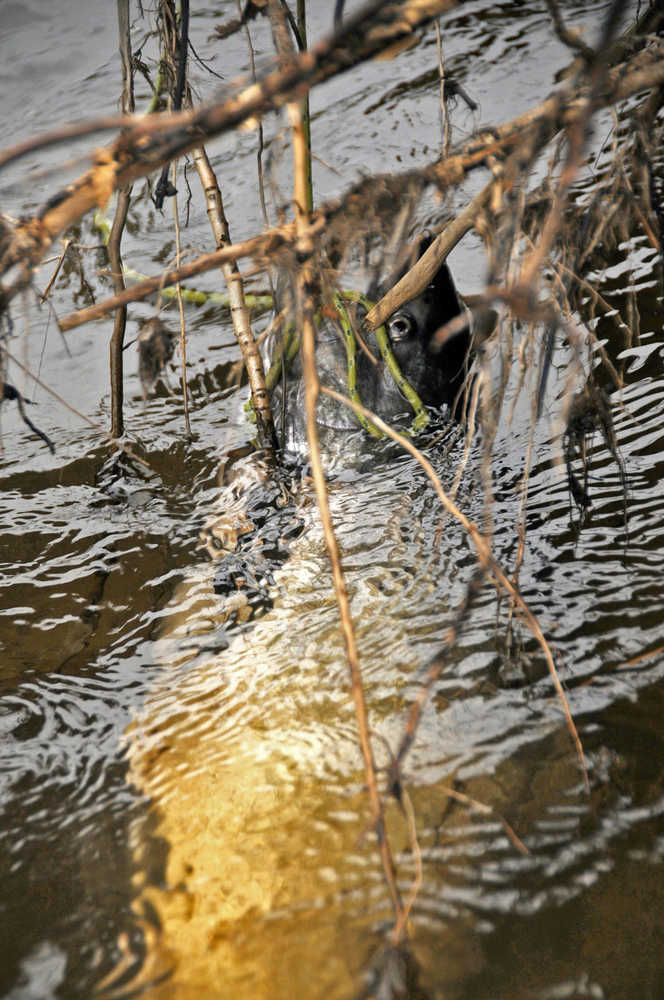This year’s improvement in king salmon returns in many stream systems across the state may not be the end of a prolonged period of low production and decreasing size.
River systems across Alaska have seen poor returns since 2007, and while Cook Inlet, the AYK delta area and many other systems saw improved runs this year, the Copper River and most of Southeast did not, said Ed Jones, the statewide Chinook salmon research coordinator, in a presentation to the Board of Fisheries at a Wednesday worksession in Soldotna. In some stream systems in Southeast, like the Taku River, escapement performances were the worst on record. Only three of the regions 11 king salmon goals met the minimum threshold this season, he said.
This is the first time the whole state has not trended the same way, he said.
“(2016) would have the worst escapement run performance in Southeast Alaska on record,” Jones said. “…The rest of the state, the abundance seems to have gone in the right direction, but from the Copper (River) south, it wasn’t.”
Fisheries managers have been alarmed by both the decreasing numbers and decreasing
size of king salmon across the state. In the Kenai River, passage hit a low in 2012, slamming the gates down on both the sport and commercial fisheries and leading to regulations designed to allow as many king salmon through into the Kenai River as possible.
The main contributing factor to the decline of stocks seems to be exceptionally high marine mortality, Jones said. Research in the lower Yukon river has shown that outmigrating king salmon are dying in large numbers in the first three months after they migrate out to sea, he sad. Normally, Southeast sport fisheries managers could expect between three and four adult fish to return for every 100 outmigrating smolts. Currently, about half a fish is coming back for that many smolts, Jones said.
“Mother Nature’s been a big culprit here,” Jones said. “…For whatever reason, we don’t know why, these fish are dying at excessive rates.”
Inriver weirs and nets have shown that a large percentage of the king salmon returning are younger, and a large proportion of them are males. Older females, typically six years old or older, are the most fertile fish and can lay the most eggs. There’s been a burst in five-year-old fish and younger, and biologists aren’t sure of the reason why, Jones said. Some stocks are actually growing larger at age, but the trend is still younger, he said.
Marine survival is hard to track, but it plays a major role in how managers can predict the fish runs will be in the following year. This year, poor marine survival seemed to be the primary culprit for the historically poor pink salmon runs that returned to Prince William Sound, Southeast Alaska and Kodiak. Newly elected Board of Fisheries chair John Jensen asked if the same conditions affecting king salmon were affecting other Pacific salmon species.
Jones said he wasn’t sure whether the same conditions were affecting pink salmon, but that fisheries managers overforecasted pink salmon production this year and overforecasting does happen during warm water years. This year turned up the warmest water temperatures in Southeast on record, he said.
Jones said fisheries managers were forecasting another poor king salmon run in Southeast next year, and given that in all years prior to 2016 all the state’s king salmon fisheries trended along the same line, it could mean a downturn for the other systems. However, nothing is certain, he said. Surveyors this year found plentiful fall juvenile king salmon in Southeast river systems, despite poor returns, so it could bode well for the future if they survive to maturity in the ocean, he said.
One of the changes that could make a difference in king salmon monitoring would be transitioning some escapement goals in the state to record only fish greater than 36 inches long, sometimes called a “big fish goal.” Ten of Southeast Alaska’s 11 sport king salmon goals are big fish goals, allowing fisheries managers to base their achieved escapement only on the biggest fish. Most of the programs are more accurate on large fish as well, he said.
Several proposals for the upcoming Upper Cook Inlet meeting in Anchorage address the question of the size of king salmon actually spawning in the river. Salmon may pass Fish and Game’s sonar at approximately river mile 13 and be counted in the escapement, but anglers fish upriver of that as well. Two similar proposals request the Board of Fisheries to close the king salmon fishery further upstream. The U.S. Fish and Wildlife Service has proposed that fishing for king salmon be closed upstream of a marker about a mile upstream of the Killey River mouth. Another group, the Kenai Area Fisherman’s Coalition, which represents private anglers, wants to see it closed upstream of Slikok Creek at approximately river mile 19. KAFC has also proposed the size slot limit for the Kenai River king salmon be changed to a maximum limit of 42 inches long.
Ed Schmitt, the chairman of KAFC, testified to the board Tuesday that the group supported the establishment of a big fish goal on the Kenai River. The larger the king, the more eggs she carries, and an all-fish escapement goal does not account for the larger kings, he said.
“I would emphasize that we need to get many more bigger kings into the river spawning,” Schmitt said. “I think that’s the only way we’re going to get the real big kings back.”
Reach Elizabeth Earl at elizabeth.earl@peninsulaclarion.com.


